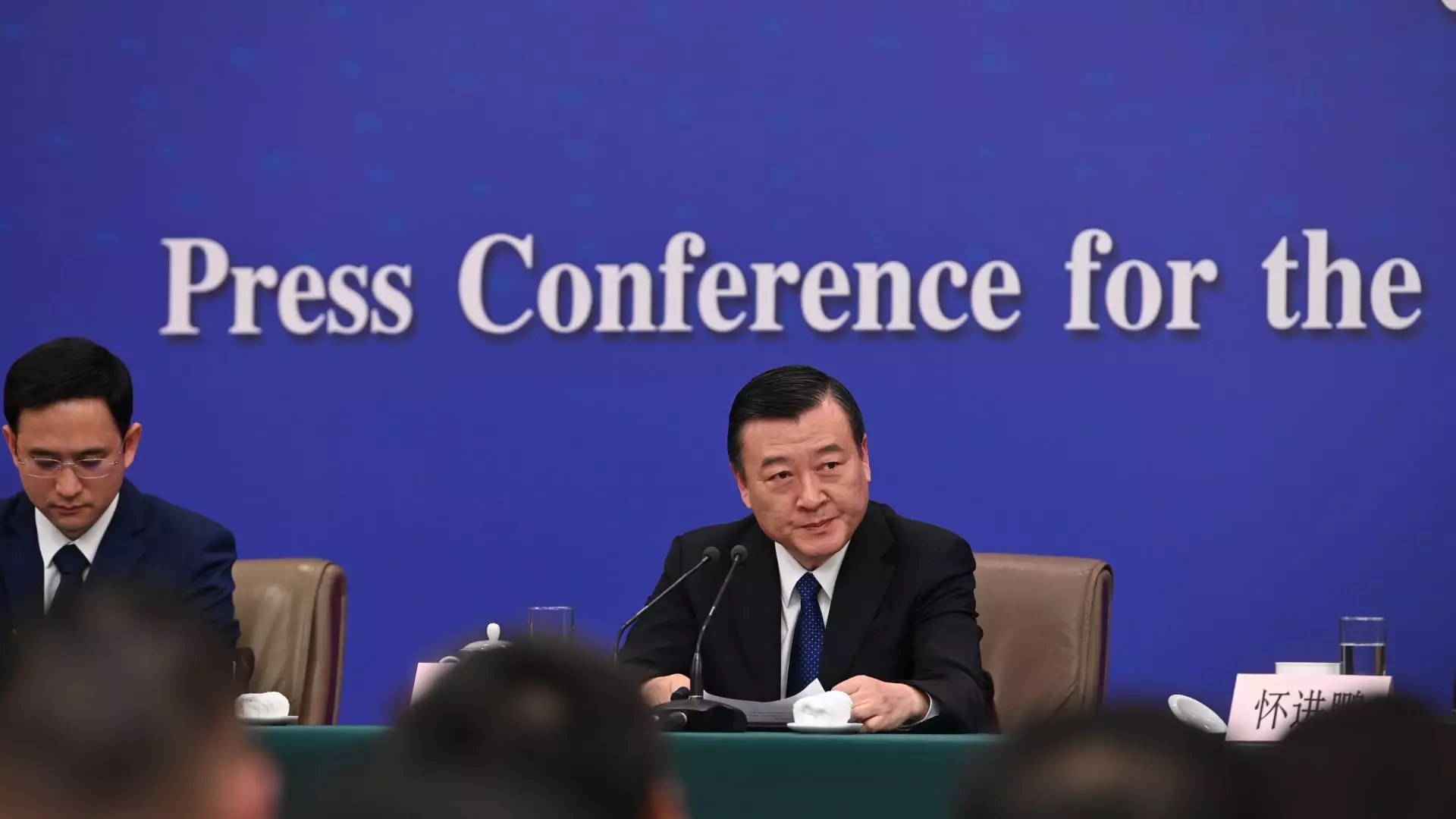China’s real estate sector, once a powerhouse driving substantial portions of the economy, has faced a significant downturn over the past few years. The aftermath of stringent regulations on leveraged borrowing has left many property developments unfinished and many homebuyers disillusioned. However, the recent announcements from government officials suggest a pivot towards revitalizing this critical sector. With a promised expansion of the “whitelist” initiative and increased access to financing, the Chinese government appears poised to reinvigorate the real estate market.
Launched earlier this year, the whitelist initiative aims to streamline lending processes for developers deemed eligible by local authorities. As of now, approximately 2.23 trillion yuan have already been funneled toward these whitelisted projects, with plans to increase this amount to a staggering 4 trillion yuan by the end of 2024. By broadening the eligibility to all commercial housing projects, officials are hoping to speed up the completion of existing developments. This change is a crucial step in addressing the backlog of unfinished homes that have left many buyers in limbo.
Minister of Housing and Urban-Rural Development, Ni Hong, emphasized the intention behind the initiative: to create a sustainable environment in which all stakeholders—developers, banks, and buyers—benefit from expedited processes and increased liquidity. This strategic pivot signals not just an effort to finish construction but also an acknowledgment of the urgent necessity to bolster public confidence in the housing market.
At the heart of the economic recovery strategy lies enhanced access to bank lending, with officials urging financial institutions to expedite disbursement of funds to developers. Previously, loans were released in tranches, potentially slowing progress. However, the new directive encourages full upfront payments, allowing for quicker mobilization of resources and reducing the bottleneck that has plagued many projects. Additionally, recent policy changes, including a reduction in the reserve requirement ratio for banks and lowered down payments for second-home purchases, are designed to stimulate demand and reinvigorate buyer interest.
This suite of measures reflects the government’s broader commitment to economic stabilization. By making it easier for individuals to buy homes and for developers to complete projects, the government aims to create a sense of optimism in a sector that has been fragile for years. Analysts, however, emphasize that these initiatives will take time to manifest significantly in market dynamics, as the recovery process in real estate investment and construction often lags behind policy implementation.
While the government’s announcements initially sparked a flurry of activity in property stock markets, the reactions highlight a pervasive skepticism among investors. Following the press conference, there were significant fluctuations in stock prices, suggesting that many investors are hesitant to fully embrace the stimulus measures. Bruce Pang, chief economist and head of Greater China at JLL, describes recent strategies as “fine-tuning existing policies” rather than introducing sweeping reforms expected to lead to immediate recovery.
Moreover, Chi Lo from BNP Paribas points out that while there may be initial enthusiasm surrounding policy announcements, investor confidence remains shaky due to previous disappointments. Investors are likely looking for more decisive actions from the government that would signal a substantial turnaround in the real estate sector.
The government is not merely resting on the whitelist initiative—numerous cities are actively adjusting their housing policies in response to market conditions. Major urban centers like Beijing, Shanghai, and Shenzhen are easing restrictions, allowing non-local buyers to enter the housing market more easily. Furthermore, Guangzhou’s move to eliminate all home purchase restrictions underscores a commitment to rejuvenating real estate transactions.
Despite these efforts, the continued decline in new home prices and significant drops in sales reflect the challenges ahead. Data indicates that August saw the largest annual decrease in new home prices in nearly a decade, signifying ongoing buyer reluctance. The aspiration to reverse this trend hinges on sustained policy action and market receptiveness.
Navigating the recovery of China’s real estate sector will require a multi-faceted approach that encompasses timely interventions and transparent communication with stakeholders. While recent governmental efforts indicate a strong intention to revitalize this key sector, sustained market recovery will rely on restoring confidence among consumers and investors alike. As policies continue to evolve, it remains imperative to monitor their real-world impact, ensuring that the strategies implemented lead to both immediate improvements and long-term stability in the housing market. The coming months will undoubtedly be critical in determining whether China’s ambitious real estate revival plan can effectively foster the economic resilience the nation desperately needs.

